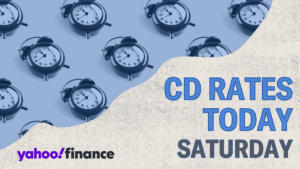Have you considered locking in a high Certificate of Deposit (CD) rate? With the Federal Reserve adjusting its federal funds rate downward three times in 2024, now might be your last chance to secure favorable rates before they dip even lower. CD rates can differ significantly across financial institutions, making it crucial to shop around and find the best rate available for your needs.
Here’s a detailed overview of CD rates as they stand today and tips for identifying the most attractive offers.
Generally, the most competitive CD rates are found on shorter terms, particularly those lasting one year or less. Online banks and credit unions are emerging as the frontrunners in providing these attractive rates, often leading the market with better offers than traditional banks.
Currently, the highest CD rate is a noteworthy 4.40% APY, offered by Marcus by Goldman Sachs on its 14-month CD, with a minimum opening deposit of just $500. This could be a fantastic opportunity for savers looking to grow their funds efficiently.
**Breaking Down CD Rates**
Understanding how much you could earn from a CD requires a knowledge of the annual percentage rate (APY). This figure not only reflects your total earnings after one year, but it also considers how often interest compounds—typically daily or monthly for CDs.
For instance, if you invest $1,000 in a one-year CD with a 1.81% APY and the interest compounds monthly, by the end of that year, your investment would grow to $1,018.25. In contrast, if you opted for a one-year CD at 4% APY, your end balance would rise to $1,040.74, netting you $40.74 in interest.
This earning potential increases dramatically with a higher deposit. Continuing with our previous example, if you choose the one-year CD at 4% APY with a $10,000 deposit, your final balance upon maturity would be $10,407.42, translating to an impressive $407.42 in interest earned.
**More Than Just Interest Rates**
While chasing the highest interest rate is essential, it’s not the only consideration when choosing a CD. Various types of CDs cater to different financial needs and could offer advantages that might justify a lower rate. Here’s a breakdown of alternative CD options:
- Bump-up CD: This unique option allows you to request a higher interest rate if your bank’s rates increase during the term of your account. Typically, you can make this adjustment only once.
- No-penalty CD: Also known as liquid CDs, these accounts let you withdraw your funds before maturity without incurring penalties, offering you greater flexibility in managing your money.
- Jumbo CD: These require a minimum deposit of $100,000 or more and usually provide higher interest rates in exchange. However, the difference between traditional and jumbo rates may not be significant in the current market environment.
- Brokered CD: As the name implies, these are purchased through brokerages rather than directly from banks. They can offer competitive rates and terms but may carry more risks and may not be FDIC-insured.
Before committing, assess your financial goals, liquidity needs, and comfort with potential risks, especially with options like brokered CDs. Maximizing your savings shouldn’t come at the cost of financial flexibility or security.
Stay informed and choose wisely—your future financial security may depend on it!

